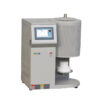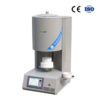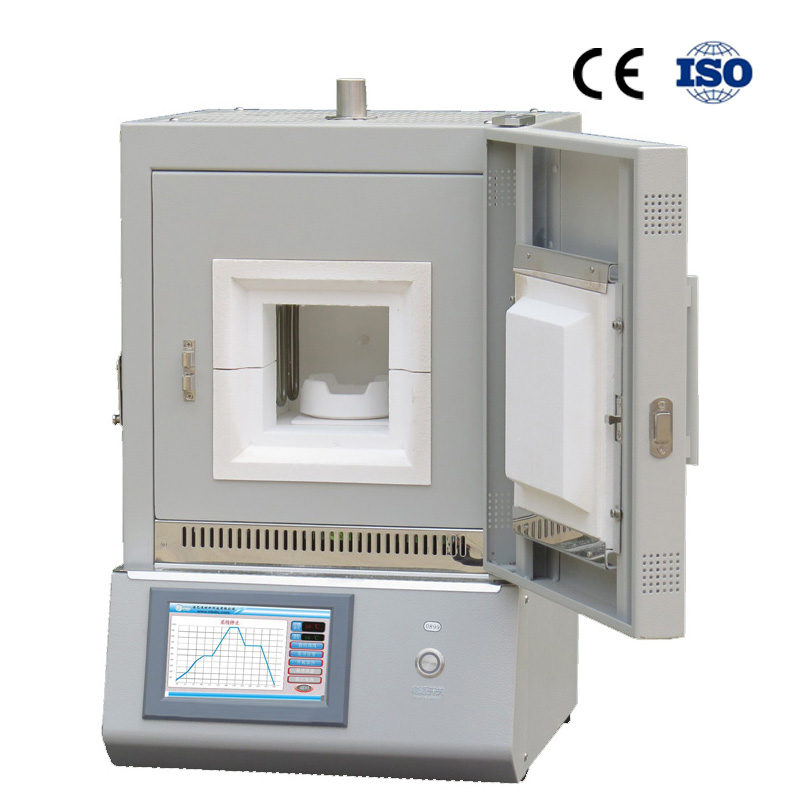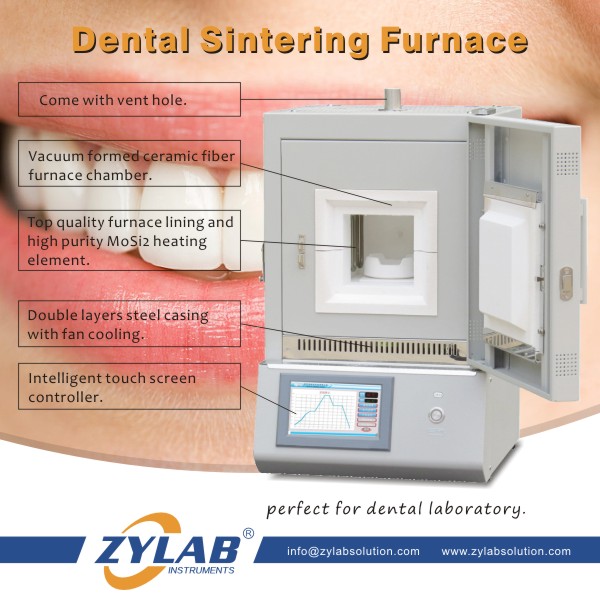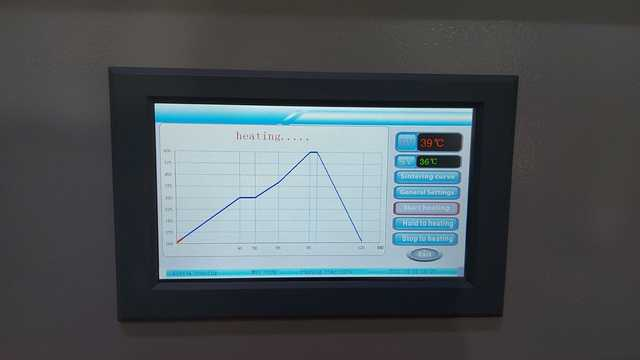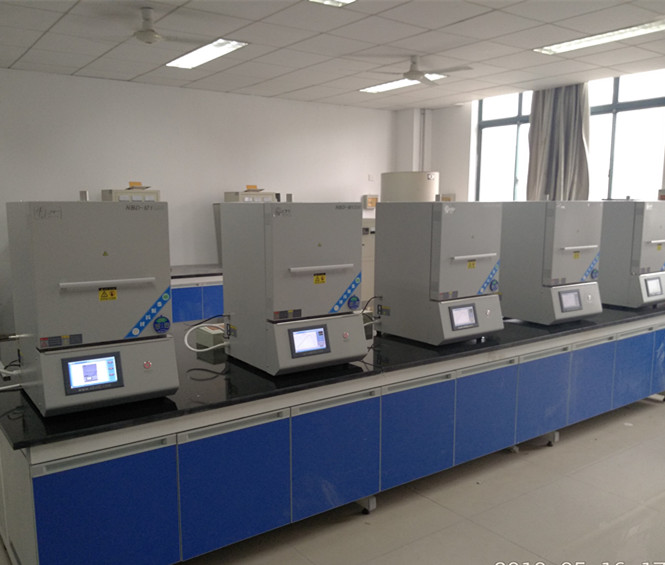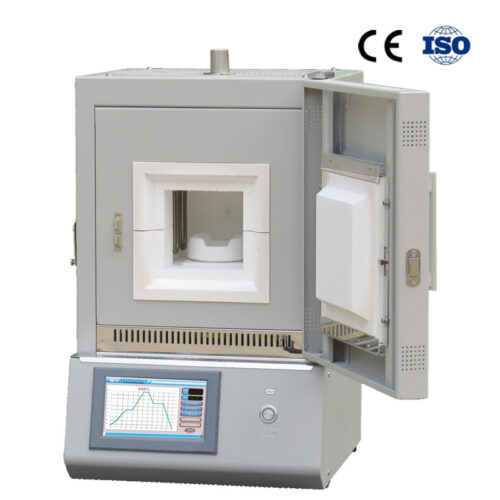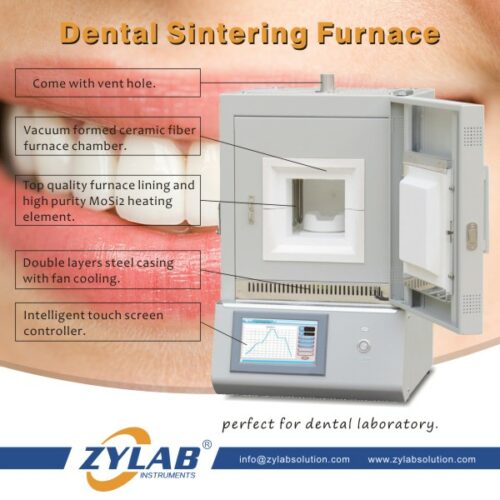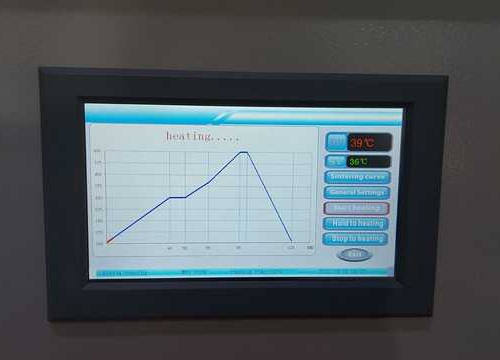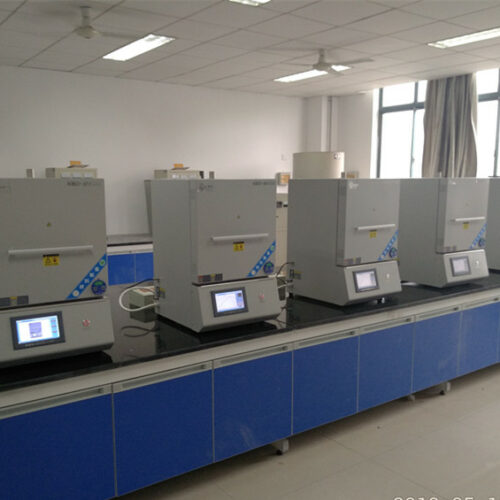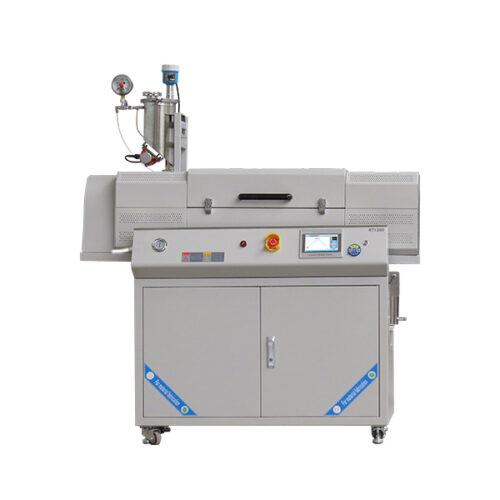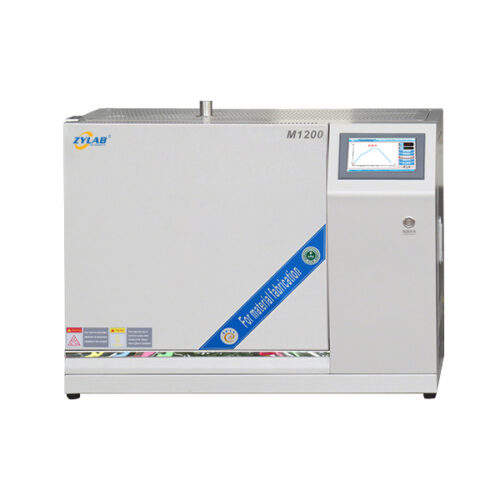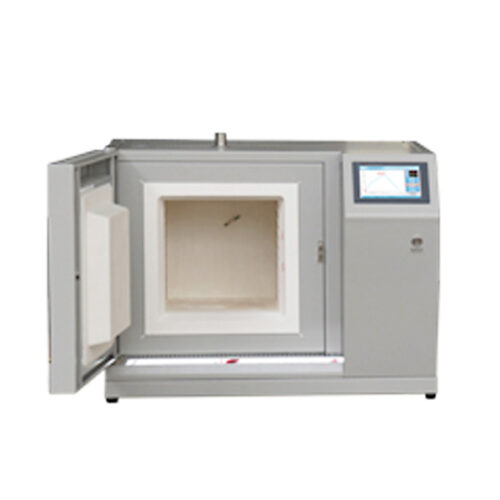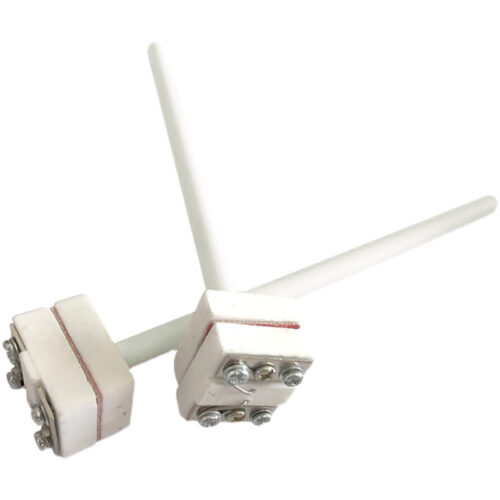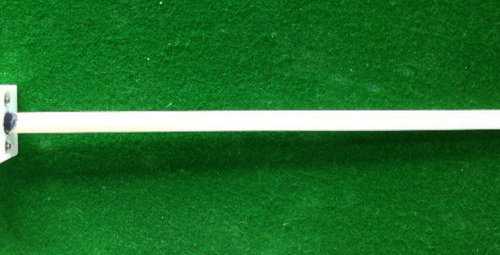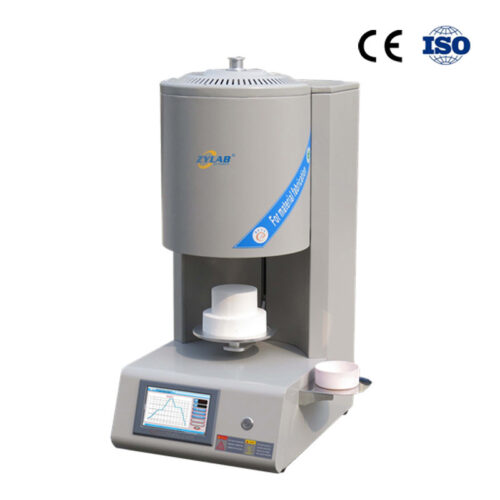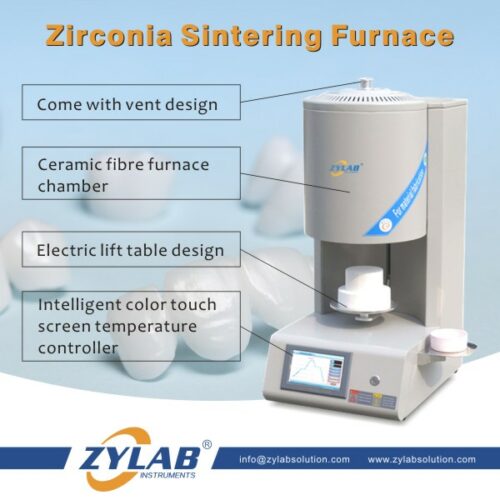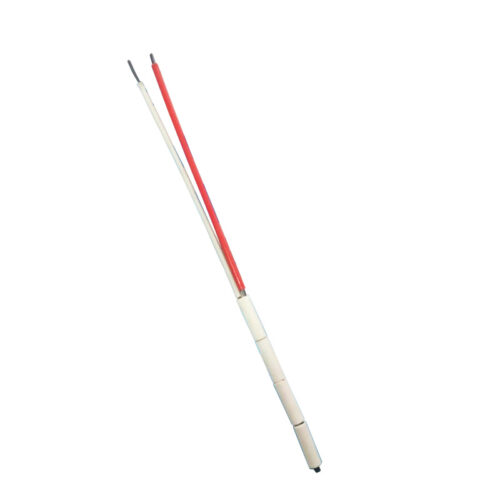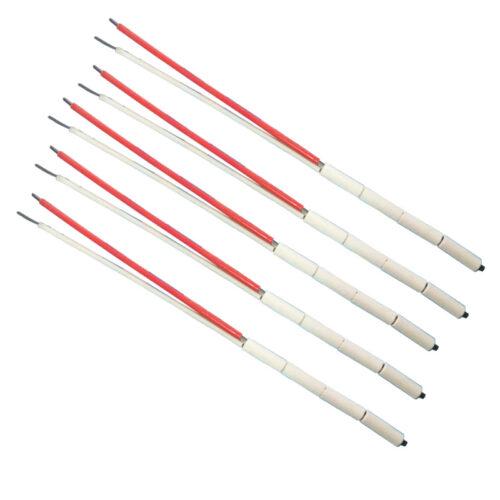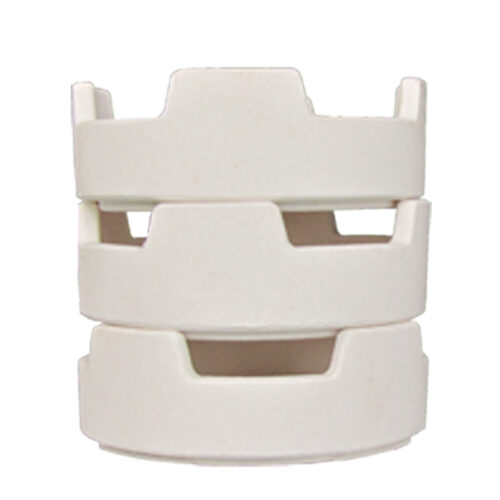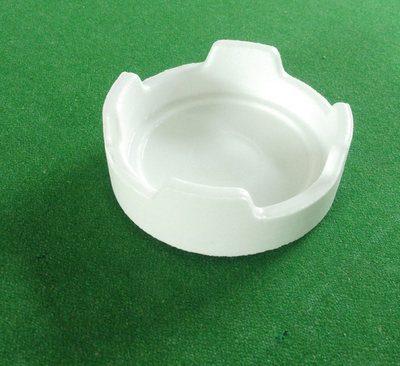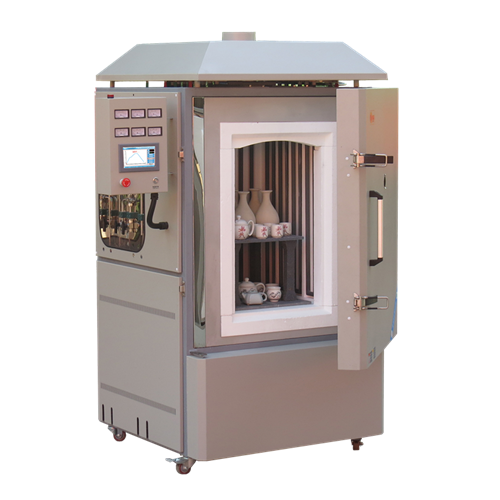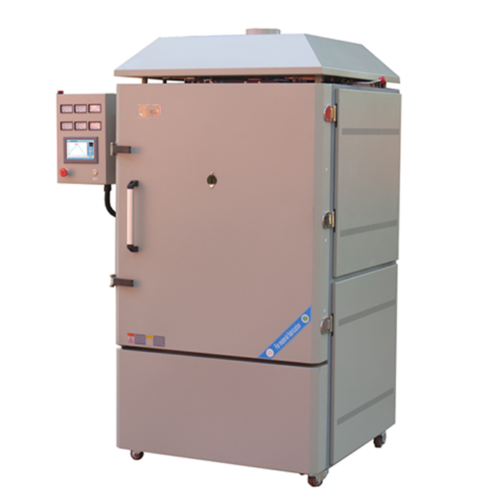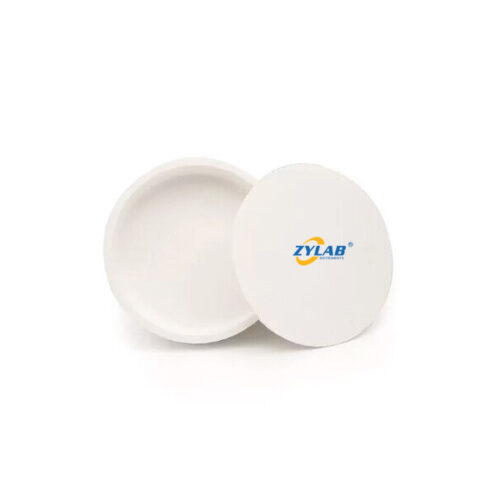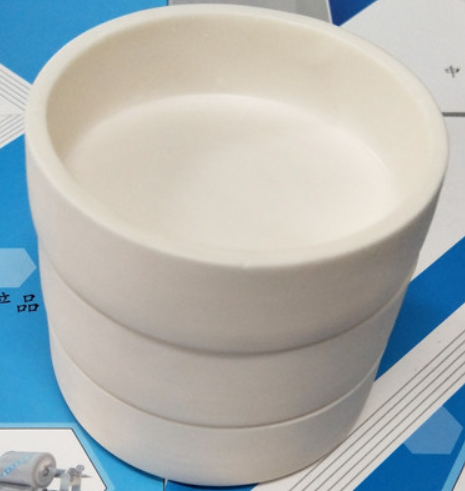High Quality Dental Sintering Furnace
Introducton
This dental sintering furnace is a specialized piece of equipment used in the dental industry for the process of sintering dental restorations.
Using special lining and heating elements made of pure type molydenum disilicide, crowns and bridges are protected against chemical contamination at the best and longer service life, excellent insulation effect.
Have a generous, 7” colored graphic touch panel, clear heating curves ; can store temperature curves to avoid the trouble caused by repeated settings of different processes. Very easy and convenient to operate.
Features of Dental Sintering Furnace
1. Max. Temperature 1700C, working temperature 800-1650C.
2.Have a generous, 7” colored graphic touch panel with which the furnace can be controlled and complex heating process can also be programmed. Clear heating curves ; can store temperature curves to avoid the trouble caused by repeated settings of different processes. Very easy and convenient to operate.
3. 30 segments programmable and auto control.
4. Ceramic fibre furnace chamber, to ensure a fast heating rate, and save power.
5. By using special lining import from Japan and heating elements made of pure type molydenum disilicide, crowns and bridges are protected against chemical contamination at the best and longer service life.
6. Vent device carefully designed on the top of furnace, is the perfect solution for the waste gas during material sintering.
7. Double layers steel casing with fan cooling, to ensure the surface of furnace below 50C, safety for the operator.
8. Low power consumable, exquisite structure and light weight, it is the ideal sintering furnace for dental lab zirconia sintering and material research labs.
Technical Parameters of Dental Sintering Furnace
| Model | M1700-12IT |
|
Furnace structure |
•1800 type high purity ceramic fibre insulation (energy saving 40% and weight lighter about 30% than old furnace); • Double layers steel casing with fan cooling, to ensure the surface of furnace below 50 oC. |
| Chamber size
(working space) |
120*120*120mm |
| Max. temperature | 1700 ℃(<1 hours) |
| Working temperature | 800 -1650 ℃ |
| Intelligent Touch Screen
Temperature controller |
1. PID automatic control and auto-tune function. 2. 30 programmable segments for precise control. 3. Built in protection for over-heated and broken thermal couple, and leakage. 4. Centralized control 7” color LCD touch screen man-machine English graphics interface, clear heating process, more intuitive and convenient operation. 5. Can store sintering programs to avoid the trouble caused by repeated settings of different processes. 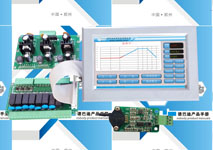 |
| Heating rate | 0-15 ℃ /min(Suggest: 10°C/min) |
| Thermocouple | B type |
| Temperature accuracy | +/- 1 ℃ |
| Heating element | M1800 high purity MoSi2 heating element |
| Working voltage | AC 208 – 240V, 50/60 Hz (as requirement) |
| Max. Power | 1.8Kw |
| Dimension | 390(L)*630(H)*540(D)mm |
| Quantity / Net weight | 1set / 60kgs |
| Warranty | 12 months(not including consumable parts, such as heating elements, thermocouple), lifetime support. |
| Certified | CE, ISO9001 |
Applications
Dental sintering furnaces have several applications in the field of dentistry. Here are some common uses:
Dental Restorations:
The primary application of dental sintering furnaces is in the fabrication of dental restorations, such as crowns, bridges, and implant abutments. These restorations are typically made from materials like zirconia, which are sintered to achieve the desired strength, fit, and aesthetics.
Prosthetics and Implants:
Dental sintering furnaces are also used in the production of prosthetics and dental implant components. These include frameworks for partial dentures, custom abutments, and other implant-supported restorations. Sintering ensures the structural integrity and precision fit of these components.
Orthodontics:
In orthodontics, dental sintering furnaces are used for manufacturing orthodontic brackets, wires, and other orthodontic appliances. Sintering allows for the production of strong and durable orthodontic components that can withstand the forces exerted during teeth alignment.
Dental Lab Research and Development:
Dental laboratories and research institutions utilize sintering furnaces for developing and testing new dental materials and technologies. The controlled sintering process helps assess the physical and mechanical properties of various dental materials under different conditions.
Dental Education and Training:
Dental schools and educational institutions use dental sintering furnaces to teach students about the fabrication and sintering of dental restorations. Students learn how to handle and operate these furnaces as part of their training in dental technology and prosthodontics.
Repair and Remake of Restorations:
In some cases, damaged or poorly fitting dental restorations may need repair or remaking. Dental sintering furnaces can be used to remove the existing restoration and sinter a new one, ensuring proper fit and function.
Dental sintering furnaces play a crucial role in the manufacturing process of various dental components, providing precise control over the sintering parameters to achieve high-quality and durable restorations.
Benefits
The use of dental sintering furnaces in the dental industry offers several benefits, including:
1.High Precision:
Dental sintering furnaces provide precise temperature control and uniform heating, ensuring consistent and accurate sintering of dental restorations. This results in restorations with precise dimensions, excellent fit, and minimal distortion.
2.Enhanced Strength and Durability:
Sintering helps to increase the strength and durability of dental restorations by promoting the fusion of powdered materials into a solid ceramic structure. This ensures that the restorations can withstand the forces exerted during normal oral functions, such as biting and chewing.
3.Aesthetics:
Dental sintering furnaces are often used for sintering tooth-colored materials like zirconia, which offer excellent aesthetics. The sintering process helps achieve the desired shade, translucency, and natural appearance of the dental restorations, enhancing the overall esthetics of the patient’s smile.
4.Biocompatibility:
Dental restorations made using sintering furnaces are typically fabricated from biocompatible materials like zirconia. These materials have been extensively tested and proven to be safe for use in the oral environment, minimizing the risk of adverse reactions or allergies.
5.Customization and Versatility:
Dental sintering furnaces enable the fabrication of highly customized dental restorations. They can be used with a variety of materials and offer flexibility in terms of design, allowing for the creation of restorations that meet the specific needs and preferences of individual patients.
6.Research and Development:
Dental sintering furnaces are valuable tools for research and development purposes. They facilitate the testing and refinement of new dental materials and technologies, contributing to advancements in the field of dentistry and improving the quality of dental restorations.
Overall, the use of dental sintering furnaces helps dental professionals achieve superior restorative outcomes, providing patients with durable, esthetic, and well-fitting dental restorations that contribute to their oral health and overall well-being.
FAQ
Q1: What materials can be sintered using a dental sintering furnace?
A1: Dental sintering furnaces are primarily used for sintering materials like zirconia, which is a popular choice for dental restorations due to its biocompatibility and aesthetic properties. Other materials that can be sintered include alumina, lithium disilicate, and certain types of ceramics specifically formulated for dental applications.
Q2: How long does the sintering process take in a dental sintering furnace?
A2: The duration of the sintering process can vary depending on factors such as the type of material being sintered and the specific requirements of the dental restoration. Typically, sintering cycles can range from a few hours to several hours.
Q3: How long can delivery?
A4: Normally, 3-7 days after confirming order. We have in stock, after testing and packing, will delivery at the first time.
More Solutions for Your Dental Laboratory
Please visit our website [Dental Laboratory Collection]

